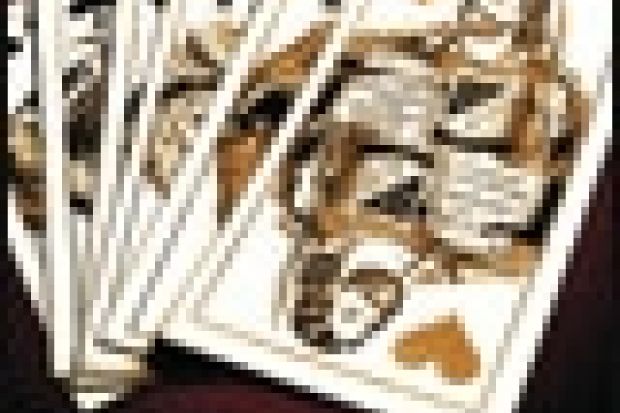In What's Luck Got to Do with It?, Joseph Mazur sets out to describe the mathematics and psychology of gambling to explain why so many gamblers "risk it all".
The book is divided into three parts: the history, the mathematics and the (psycho-) analysis of gambling. Doubtless aimed at the interested gambler, the frequent cultural references, anecdotes and intervention of psychology nevertheless make the book appealing reading.
The historical section traces the development of gambling and probability from Roman times (albeit without mentioning alea iacta est) up to the credit crunch. An omission is a detailed discussion of the more benign form of gambling, namely "insurance".
As the mathematics section is pitched at A level, many readers may skim the first part while noting the details of useful classroom exercises to teach probability. For those forced to look for alternative sources of income after the Conservative-Liberal Democrat coalition's spending cuts, Mazur explains the standard US gambling activities - roulette, craps, lotteries, blackjack, poker and betting on horse racing and sports - and the associated winning probabilities.
Apparently, the average resident of Vermont spends $414.93 (£266) a year on lotteries. Mazur recommends that they donate this directly to the good causes the lottery supports, with punters thereby gaining a tax advantage greater than the mathematical expectation of the 19 cents win in each draw. Yet 40.5 per cent of Vermonters still play the lottery, half of whom have a university education.
In this section, Mazur also includes the observation of "group intelligence" trials showing that in situations in which punters give 2-1 odds for horse-racing favourites, these favourites won on average one in three times; refers blackjack players to a 1962 book for strategies; shows craps to be very nearly a fair game (the probability of winning = 0.4929) and reveals that modern slot machines generate results electronically, even if they look mechanical, with unequal probabilities of each symbol coming up.
The final section deals with the psychology of gamblers. Of particular interest to British readers is an analysis of the optimal stopping game Deal or No Deal (for those who still have a job, the TV game show is broadcast most afternoons). Recent studies show that the biggest winners and losers both have a low degree of risk aversion, tending to reject financial offers to stop that exceed the mathematically expected value of the remaining prize. Moreover, the strategy of playing is complex and relies on psychology as well as mathematics. Many players fear the situation where large cash prizes are lost early in the game, hoping instead for an outcome where the bigger sums remain in play until the end. However, in the event of the former situation, to create TV tension, the banker's offers apparently tend to go up during the game, and in the event of the latter outcome, the offers tend to go down.
Another classic psychological example discussed is the "House effect". Two groups are formed at random with each person given $50 (if you like, call this public funding for universities). Both groups are told they can stick with what they have or toss a coin.
Members of group A (call them Chancellors of the Exchequer) will win or lose $15 extra on a toss. Members of group B (call them voters wanting to attend university) will win overall either $65 or $35 on their toss.
The mathematical expectations of these two groups are identical, but experiment shows that more of group A elect to toss than do members of group B. Members of A tend not perceive the $50 as personal money, so a loss is not a "real" loss. Members of B perceive the $50 as their own and so are more conscious of the downside gamble.
If not a probability primer, this book is essential reading for George Osborne.
What's Luck Got to Do with It? The History, Mathematics, and Psychology of the Gambler's Illusion
By Joseph Mazur
Princeton University Press
296pp, £20.95
ISBN 9780691138909
Published 3 June 2010
Register to continue
Why register?
- Registration is free and only takes a moment
- Once registered, you can read 3 articles a month
- Sign up for our newsletter
Subscribe
Or subscribe for unlimited access to:
- Unlimited access to news, views, insights & reviews
- Digital editions
- Digital access to THE’s university and college rankings analysis
Already registered or a current subscriber? Login
